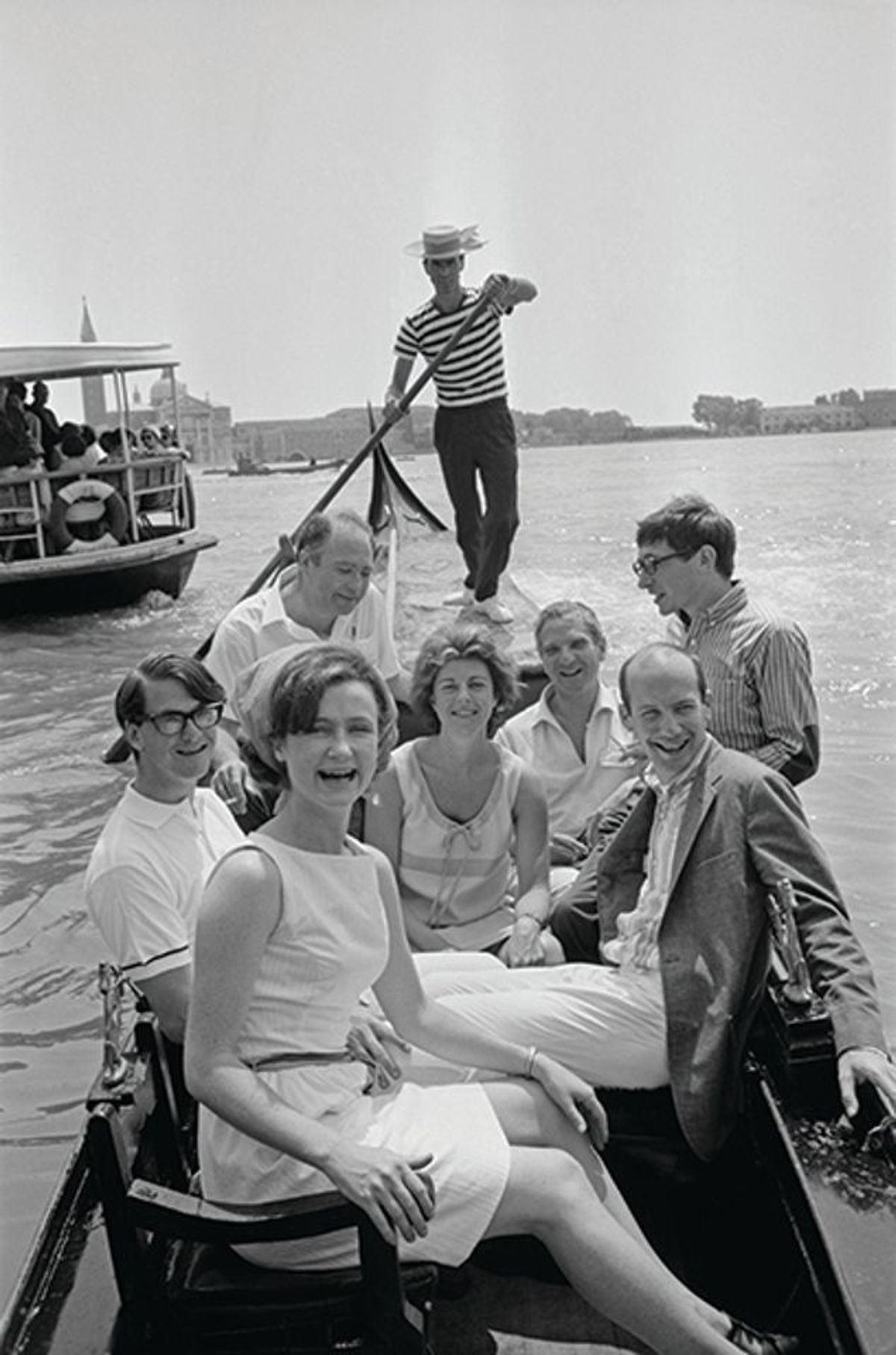There are hundreds of exhibitions in Venice during the Biennale. Alongside the main exhibition in the Giardini and Arsenale, there are 90 national presentations, many in nearby pavilions in the Giardini and in spaces around the Arsenale, but also dotted throughout Venice. Then there are the official collateral exhibitions in museums and galleries, and extra shows across the city. The Art Newspaper team will be on the ground in Venice to report on all aspects of this festival of contemporary art, and here our writers—and those from our sister publications in China, France, Italy and Russia—pick the shows and events they are most looking forward to seeing, most of which take place from 11 May-24 November, unless stated otherwise.
ALISON COLE, editor, The Art Newspaper
Iraq pavilion, Fatherland, Ca’ del Duca
A personal highlight of the 2017 Biennale was the Iraq pavilion, a moving museum-style display of archaeological artefacts, modern Iraqi art and contemporary artistic testimony. This time round, the Iraqi-Kurdish artist Serwan Baran, a soldier and war artist, will interrogate the notion of “fatherland” through his darkly expressionist large-scale works.
Italian pavilion, Neither Nor: the Challenge to the Labyrinth, Arsenale
The Italian pavilion is again showing a strong trio of artists. This edition is an intriguing mix: the big-league, playful Enrico David, currently the subject of a major survey in Chicago; the fiercely feminist Chiara Fumai, a standout at Documenta 13 in Kassel who died tragically last year at the age of 39; and the coolly conceptual Liliana Moro.
Edmund de Waal: psalm, Canton Scuola, Campo del Ghetto Nuovo; Ateneo Veneto, Campo San Fantin, 8 May-29 September
Edmund de Waal will hopefully take Biennale audiences off the beaten track into the beautiful spaces of the Venetian Ghetto—Europe’s oldest Jewish ghetto. Describing it as a dream project, the UK artist will speak about “the poetry of exile” in two installations: the first is in the 16th-century synagogue, the Canton Scuola; the second is a pavilion based in the Ateneo Veneto, near the Fenice Opera House.
JULIA MICHALSKA, deputy editor, The Art Newspaper
Canada pavilion, Isuma, Giardini
It is a historic moment: Canada, a country that continues to struggle with the legacies of colonialism, is exhibiting Inuit art in Venice for the first time. The display by the artist collective Isuma will include an online exhibition accessible to remote Inuit communities through a network of local servers.
Adrian Ghenie: the Battle Between Carnival and Feast, Palazzo Cini Gallery, until 19 November
Building upon this year’s trend for painting shows in Venice, Adrian Ghenie’s display of new works promises his usual mixture of prodigious skill and historical heft. This is the artist’s second major outing in Venice since representing Romania in 2015. The show features paintings of powerful people, including an unnervingly beautiful depiction of US President Donald Trump.
Encores: Music on Recurrence, Redundancy and Surplus, Teatro del Stabile Veneto, Carlo Goldoni, 9 May
Music is instrumental in the works of Pierre Huyghe and Anri Sala, so it is little wonder they—along with Saâdane Afif, Hsia-Fei Chang, Yutaka Makino, Jonathan Monk and Annika Larsson—are participating in this concert organised by the composer Augustin Maurs. Centred around the theme of the encore, it features live musicians and sound-reactive animation.
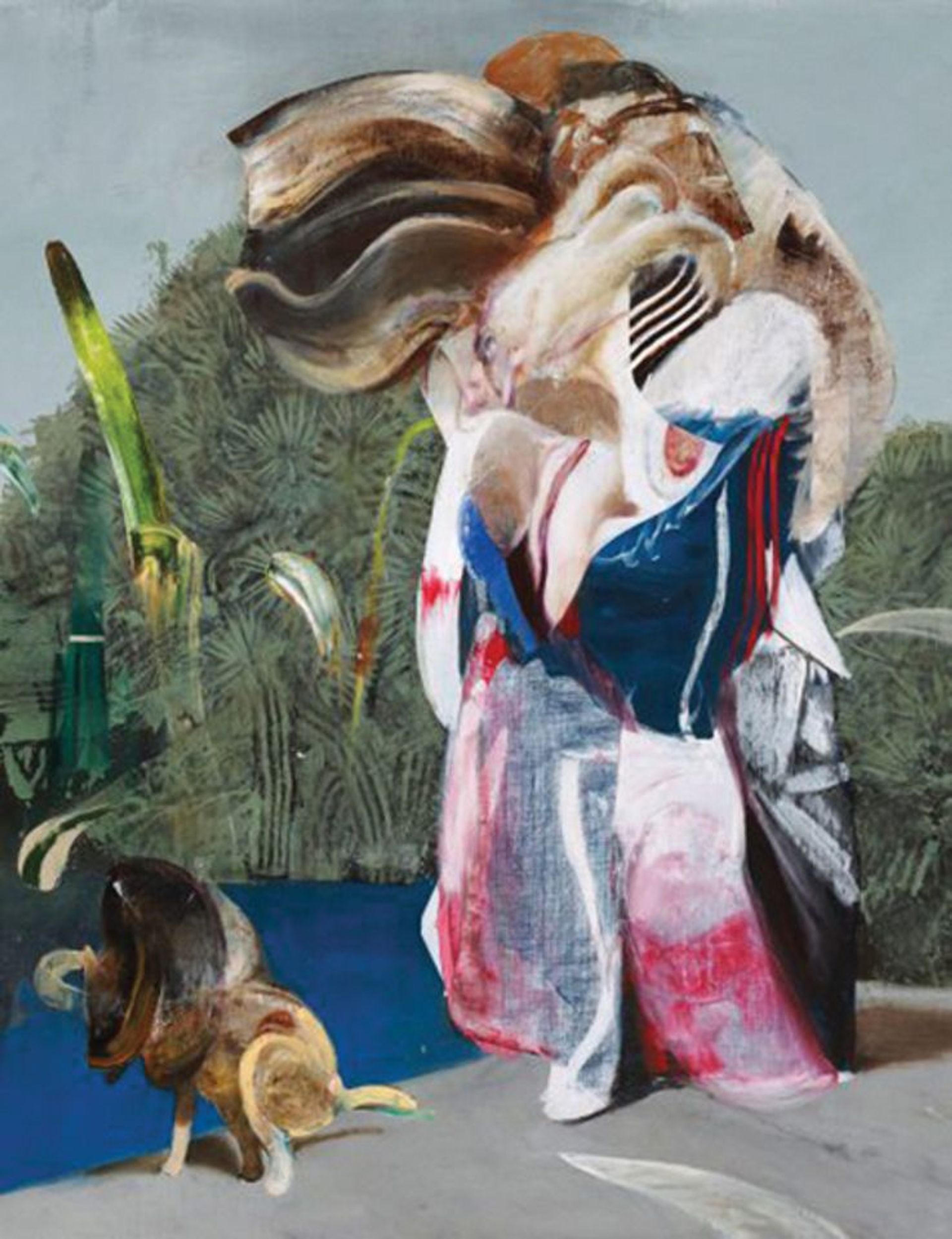
Adrian Ghenie's Figure with Dog (2019) Courtesy Galerie Thaddaeus Ropac; London; Paris; Salzburg, © Adrian Ghenie
BEN LUKE, review editor, The Art Newspaper
Helen Frankenthaler: Pittura/Panorama, Palazzo Grimani, 7 May-17 November
Helen Frankenthaler acknowledged her profound debt to Venetian painting with references to Titian and Bassano in the titles of her lyrical abstracts. It is fitting, then, that 14 of the American artist’s paintings will be shown in this great Renaissance palace, making it the first Frankenthaler show in Venice since she represented the US in the 1966 Biennale.
Portuguese pavilion, Leonor Antunes: a Seam, a Surface, a Hinge, or a Knot, Palazzo Giustinian Lolin
Leonor Antunes’s sculptures draw on the aesthetics of historical art and design, but also the social environments in which they were created. Her project will explore Venice’s great Modernist, Carlo Scarpa, as well as two influential women in Venice in the Modern era: the patron Savina Masieri and the architect and historian Egle Trincanato.
Darren Bader, May You Live in Interesting Times, Giardini and Arsenale
The artist Darren Bader has made an augmented reality work, purportedly an alternative guide to Venice. In a cryptic quote, he tells us: “So you bring together some temperamental GPS, a regrettably low polygon limit, some expert texturing and a brand new AppStore developer’s account. Then you pray (to some vague but perhaps sympathetic spirit) that your ideal Venetian settings will accommodate you and your coders. Add to the mix a couple of artists you’ve likely never heard of, a dose of pigeon shit, some dude with the right kind of hair, and hope for success.”
Hannah McGivern, museums and heritage editor, The Art Newspaper
Njideka Akunyili Crosby, May You Live in Interesting Times, Giardini and Arsenale
Ralph Rugoff has promised his exhibition will embrace “both pleasure and critical thinking” and open up multiple perspectives on the world. One artist who surely embodies that brief is Njideka Akunyili Crosby, the Nigerian-American MacArthur “genius” painter. Her densely collaged works, distilling complex themes of belonging and race into cinematic tableaux of unquestionable beauty, will be worth taking time over.
Lithuanian pavilion, Sun & Sea (Marina), Arsenale
For their ecological “opera performance”, the artists Rugilė Barzdžiukaitė, Vaiva Grainytė and Lina Lapelytė are converting a building near the Arsenale into a sandy beach where sunbathers will break into songs veering between subjects such as everyday life and planetary crisis. With refreshing honesty about the cost of participating in the Biennale, the artists were crowdfunding at the time of writing to pay more than 20 singers to perform every Saturday from May to October.
Jannis Kounellis, Fondazione Prada, Ca’ Corner della Regina
Who better than Germano Celant to curate the first major exhibition on Jannis Kounellis since his death in 2017? The Italian critic included the artist’s iron vat of coal in the fateful Genoa group show that christened the Arte Povera movement in 1967. This survey will be a chance to consider the full arc of Kounellis’s career, far beyond his early breakthrough.
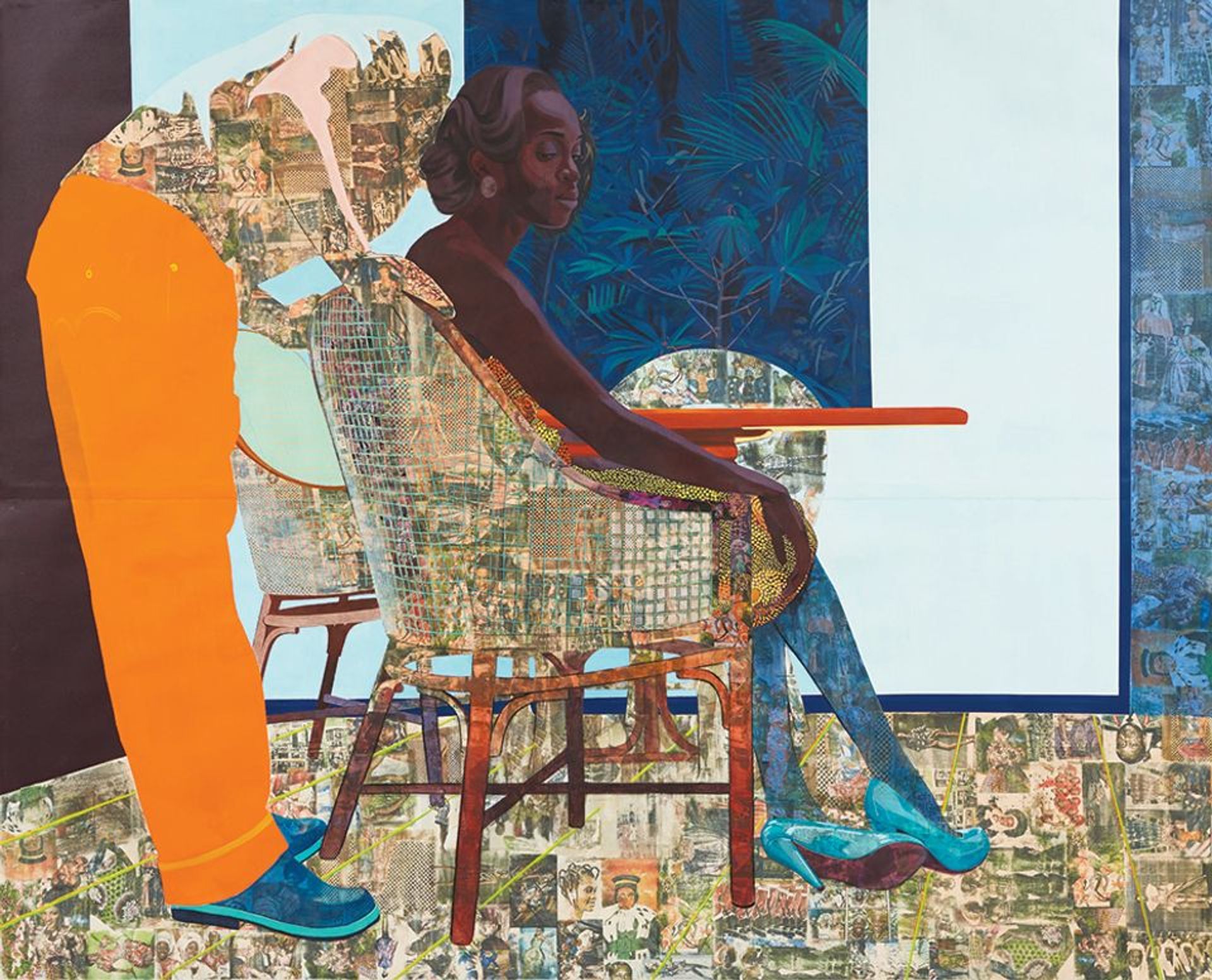
Njideka Akunyili Crosby’s collaged works, such as And We Begin To Let Go (2013), can be seen in the main exhibition © Njideka Akunyili Crosby; Courtesy the artist; Victoria Miro; and David Zwirner; Photo credit: Jason Wyche
JOSÉ DA SILVA, exhibitions editor, The Art Newspaper
New Zealand pavilion, Dane Mitchell: Post Hoc, Palazzina Canonica
Taking the pavilion out onto the streets of Venice, Dane Mitchell’s project will see a series of phone masts disguised as pine trees emit a voice reading more than 260 different lists of defunct phenomena, such as names of former nations, obsolete search engines and lost films. The lists will be broadcast from an echo-free chamber in New Zealand’s pavilion.
Ukrainian pavilion, The Shadow of Dream Cast upon Giardini della Biennale, Arsenale
The Ukrainian pavilion’s project will, quite literally, cast a shadow over the Biennale. Its curators, the collective Open Group, will have the largest aircraft in service—a Ukrainian-built An-225 Mriya (mriya means dream in Ukrainian)—fly over Venice with a list of contemporary Ukrainian artists inside its fuselage. Keep your eyes to the sky.
Mozambique pavilion, Gonçalo Mabunda, Mauro Pinto, Filipe Branquinho: the Past, the Present and the In Between, Palazzo Mora
The photographers Filipe Branquinho and Mauro Pinto, both of whom explore social conditions and often focus on interior settings using natural light, will be joined by the sculptor Gonçalo Mabunda, who makes works from deactivated weapons left over from the east African country’s civil war.
GARETH HARRIS, chief contributing editor, The Art Newspaper
Meetings on Art, In and around Giardini and Arsenale, 8-12 May and 22-24 November
The Biennale is not known as a platform for experimental performance art, but this new programme, devised by London’s Delfina Foundation and the Biennale’s artistic director Ralph Rugoff, should fill the gap. Fourteen performances by artists including Nástio Mosquito, Paul Maheke and Alex Baczynski-Jenkins will enliven the “in-between” spaces of the Biennale’s gardens and galleries.
French pavilion, Laure Prouvost, Giardini
Prouvost’s piece sounds bonkers but beautiful: the London-based artist criss-crossed France with 12 intergenerational “characters”, including a magician and a rapper, taking in the Paris suburbs, Roubaix in the north of France and the coastline near Marseille before heading to La Serenissima itself. Leftover objects from the road trip film, made of resin and clay, will also be shown.
Heartbreak, Ca’ del Duca
The exhibition, organised by the non-profit Ruya Maps, will include works by nine artists inspired by the classical, heart-wrenching story of Dido and Aeneas. But it’s not as soppy as it sounds: the Damascus-born artist Majd Abdel Hamid will, for example, show embroideries outlining the floor plans of Syria’s Tadmur prison, which was demolished by Islamic State in 2015.

Laure Prouvost’s works in the French pavilion, such as Deep See Blue Surrounding You (2019) Courtesy Laure Prouvost; Galerie Nathalie Obadia
JANE MORRIS, editor-at-large, The Art Newspaper
Lawrence Abu Hamdan, May You Live in Interesting Times, Giardini and Arsenale
According to the Jordanian artist Lawrence Abu Hamdan, “in 2000 there were 15 fortified border walls between sovereign nations”, now “barriers at 63 borders divide nations”. His sound installation based on torture at Syria’s Saydnaya prison is one of the most disturbing works I’ve listened to. Walled Unwalled (2018), which will feature in the Biennale’s main exhibition, will mine trial evidence “experienced through walls”. For more, see Ralph Rugoff on artists to watch, pXV.
US pavilion, Martin Puryear: Liberty/Libertà, Giardini
Martin Puryear, a 77-year-old African American sculptor, creates poetic handcrafted sculptures in traditional materials such as wood, stone and metal. He claims to have “tasted and spat out Minimalism”; indeed, his aesthetic feels closer to the early Modernism of Brancusi and Arp. His subject matter alludes, subtly, to history, race and identity.
Burri La Pittura: Irriducibile Presenza, Fondazione Giorgio Cini Onlus, 10 May-28 July
Alberto Burri is lionised in Italy, credited—with Fontana—with creating a dynamic art scene out of the ashes of Mussolini’s dictatorship and the Second World War. Burri was a major influence on a subsequent generation of Arte Povera and Nouveau Réalisme artists. This is a survey of 50 works from museums, private collections and the artist’s museum in Umbria.
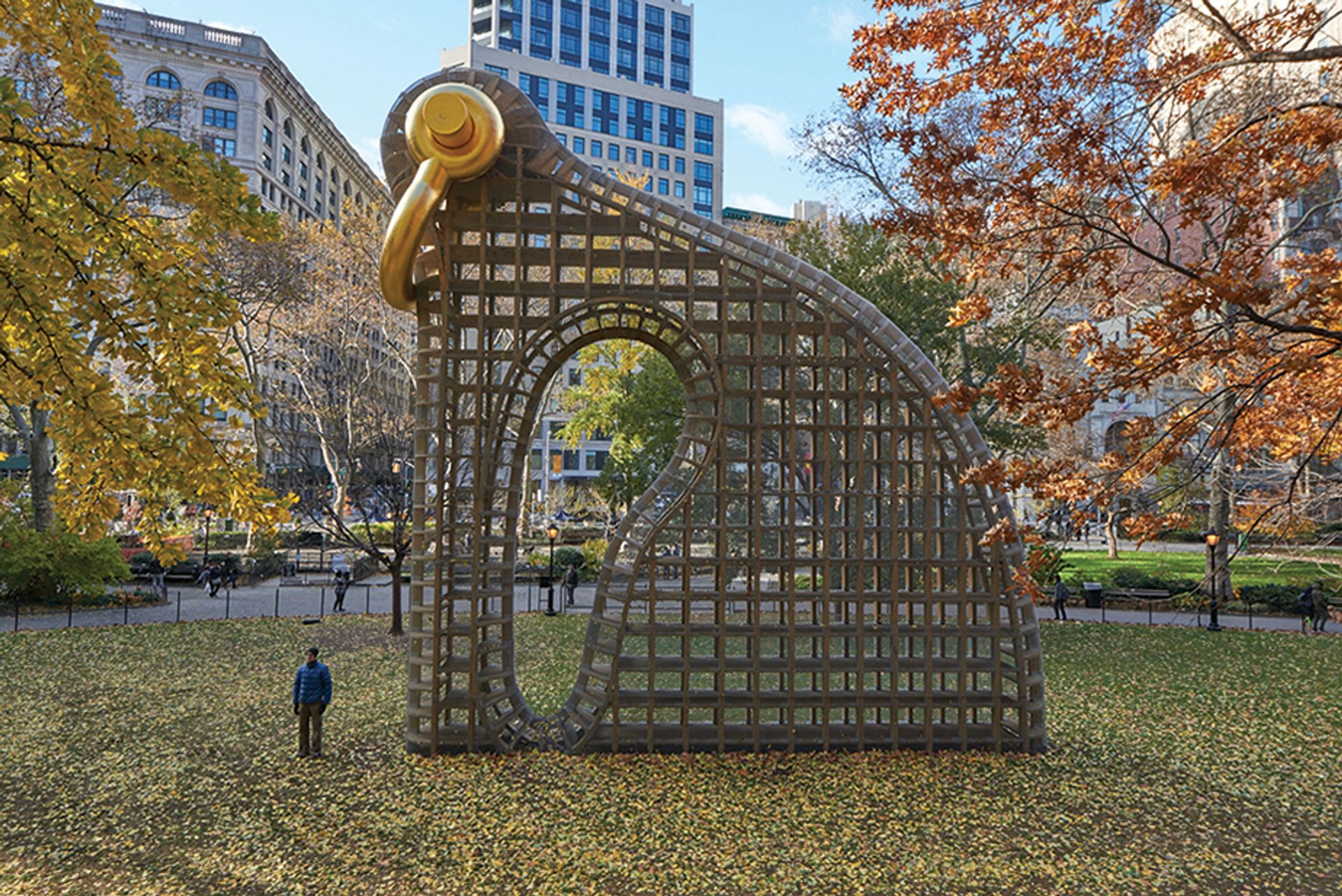
Martin Puryear's Big Bling (2016) © Martin Puryear; courtesy Matthew Marks Gallery
LOUISA BUCK, contemporary art correspondent, The Art Newspaper
Ghana pavilion, Ghana Freedom, Artigliere, Arsenale
Ghana makes its debut with a pavilion, designed by David Adjaye, that features a heavyweight, multi- generational lineup of artists of Ghanian descent. There are large-scale installations by El Anatsui and Ibrahim Mahama, photographs by Felicia Abban, paintings by Lynette Yiadom-Boakye, a film by John Akomfrah and a video work by Selasi Awusi Sosu. The pavilion’s strategic adviser was the late, lamented Okwui Enwezor.
Irish pavilion, Eva Rothschild: the Shrinking Universe, Artigliere, Arsenale
Eva Rothschild will immerse visitors in an intensely sculptural experience involving four large new interconnected works formed of components ranging from concrete, painted steel and fabric, as well as objects cast in bronze, polyurethane and jesmonite. Their inspiration ranges from bollards to the Giant’s Causeway.
Icelandic pavilion, Chromo Sapiens: Hrafnhildur Arnardóttir (Shoplifter), Spazio Punch
The artist Hrafnhildur Arnardóttir, aka Shoplifter, uses hair as her primary medium, but with a keenly formal eye. For Venice, she will transform a warehouse into a giant psychedelic furry grotto to take us back to our primal sensory selves with the help of Icelandic heavy metal band HAM. A chance to let the senses run amok in a lighthearted and cathartic experience.
YE YING, editor-in-chief, The Art Newspaper China
Luc Tuymans: La Pelle, Palazzo Grassi, until 6 January 2020
The first solo exhibition of Luc Tuymans’s work in Italy, curated by Caroline Bourgeois, includes more than 80 paintings from 1986 to today. The show’s title, La Pelle (skin), refers to a 1949 novel by the Italian writer Curzio Malaparte, set in Naples at the end of the Second World War when, as Tuymans has said, “Europe was in chaos, just like today.”
China pavilion, Re-rui, Arsenale
The title of the China pavilion, Re-rui , responds to the theme of the main exhibition, May You Live in Interesting Times. Re, a prefix in many languages, means again or return. Rui is a Chinese character with a similar sound, which means wisdom. Four artists are featured in the presentation, including Fei Jun, who will “transplant” Chinese bridges over Venice’s canals using a mobile app.
MILENA ORLOVA, editor-in-chief, The Art Newspaper Russia
Russian pavilion, Lc. 15: 11-32, Giardini
For the first time, the State Hermitage Museum has commissioned the Russian pavilion. Curated by its director Mikhail Piotrovsky, the show is dedicated to one of the museum’s masterpieces, Rembrandt’s The Return of the Prodigal Son (around 1668)—hence the Biblical reference in the show’s title. Contributors include the film director Alexander Sokurov, who won the Golden Lion in 2011 for his film Faust.
There Is a Beginning at the End: the Secret Tintoretto Fraternity, Chiesa di San Fantin, 11 May-11 September
A collaboration between the Pushkin State Museum of Fine Arts and the Stella Art Foundation, this show focuses on artistic responses to the Venetian master Tintoretto. It includes video installations created for the interior of the church by Dmitry Krymov, Irina Nakhova and Gary Hill, among others, and Tintoretto’s own Minerva Sending Away Mars from Peace and Prosperity (1576-77), on loan from the Doge’s Palace.
Time, Forward! V-A-C Zattere, 11 May-20 October
Time, Forward! features 14 international artists who promise to outrun our own time and look into the future. Its title is taken from a Soviet film to mark the 50th anniversary of the October Revolution of 1917. Georgy Sviridov’s score for the film became popular in the USSR, and was used as the theme music for the Vremya (Time) news programme on the main national TV channel.
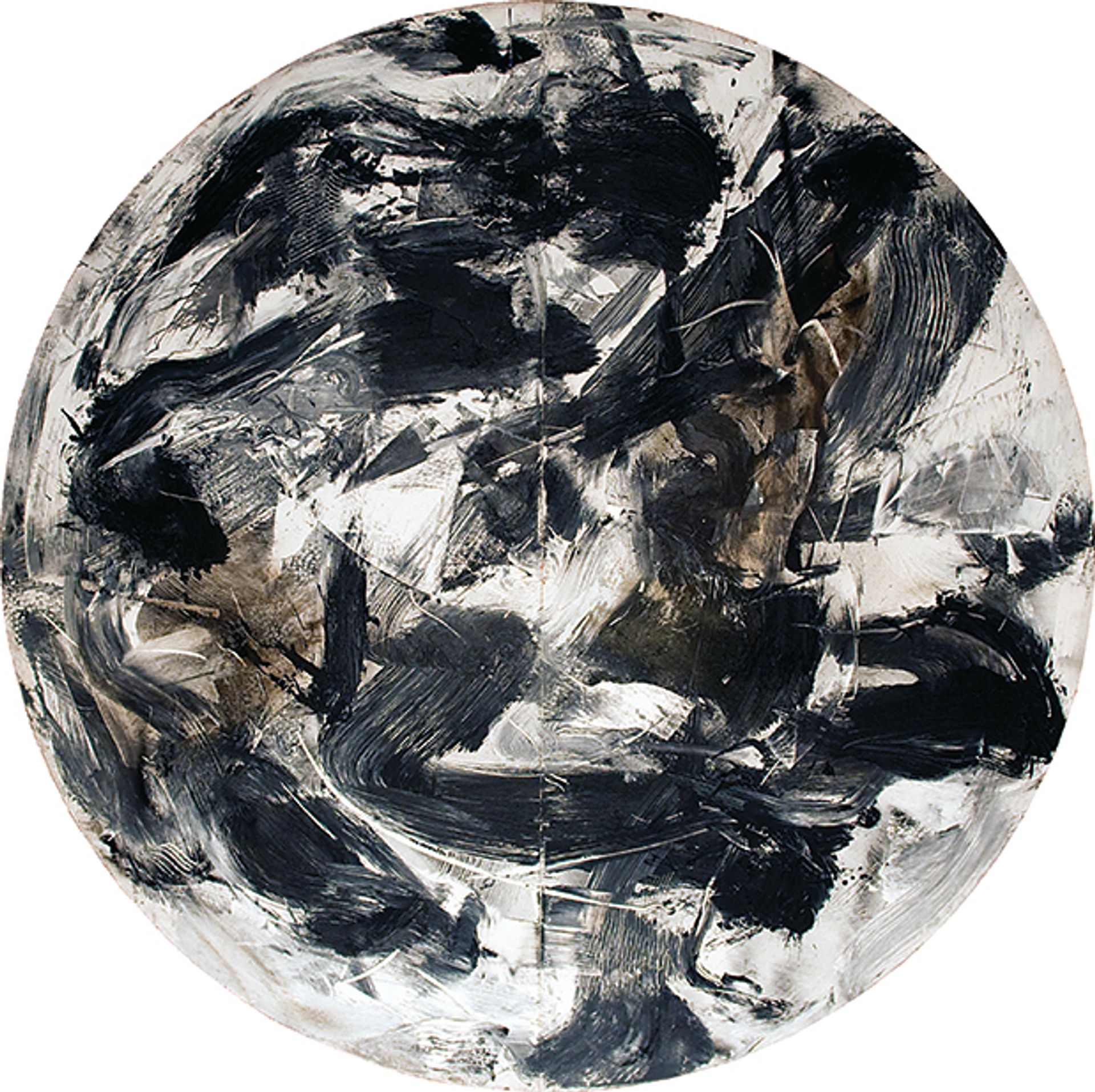
Tondo ‘87 (1987) by Emilio Vedova will be part of an exploration, by the Pushkin State Museum and the Stella Art Foundation, into Tintoretto’s influence Courtesy of the artist
PHILIPPE RÉGNIER, editor, The Art Newspaper France
Madagascar pavilion, Joël Andrianomearisoa, Arsenale
Madagascar is represented for the first time at the Venice Biennale with a pavilion located in the Arsenale. The artist Joël Andrianomearisoa has created the project I have forgotten the night. This immersive installation made up of suspended black hangings—an architectural structure made of paper—takes visitors on a poetic journey, recalling Voltaire’s celebrated expression: “And we have nights that are more beautiful than your days.”
Pino Pascali, Palazzo Cavanis, Fondamenta Zattere ai Gesuati, Dorsoduro
Pino Pascali (1938-68), one of the most important Italian artists of the 1960s, took a series of little known photographs. The exhibition in Venice, which gives a new perspective on the artist, is based on a collection of 160 photographs recently discovered and acquired by the Pino Pascali Foundation. The exhibition shows how the artist worked with photography both in a preparatory way and as a language in its own right.
FRANCO FANELLI, deputy editor, Il Giornale dell’Arte
Arshile Gorky: 1904-1948, Ca’ Pesaro, International Gallery of Modern Art, 9 May-22 September
“It seemed as though De Kooning was spying on Arshile’s work out of the window,” recalled Agnes, Gorky’s wife. I suggest that the many collectors of the currently so modish, meretricious and ornamental neo-abstraction do likewise. There are 80 works in this show, including Gorky’s extraordinary drawings, an “archetype” of Modern painting.
Belgian pavilion, Jos de Gruyter and Harald Thys: Mondo Cane, Giardini
Italian trash in kitsch sauce: a revisiting by Jos de Gruyter and Harald Thys of the 1960s Italian Mondo Cane film genre—pretend denunciations but actually just sensationalism. Mockery of the aestheticising cynicism of politically engaged contemporary art in a visionary and gruesome pavilion such as only the Flemish (from Bosch to Ensor) can guarantee us.
Lara Favaretto, May You Live in Interesting Times, Giardini and Arsenale
The project is top secret, but after the artificial swamp created in the Arsenale in 2009, and the heap of wrecked metal in the old Kassel railway station for Documenta 2012, we’re sure it will be good. This Italian artist is one of the few capable of surprising, with her bitterly ironic reflections on “serious” subjects such as monumentality and memory.


